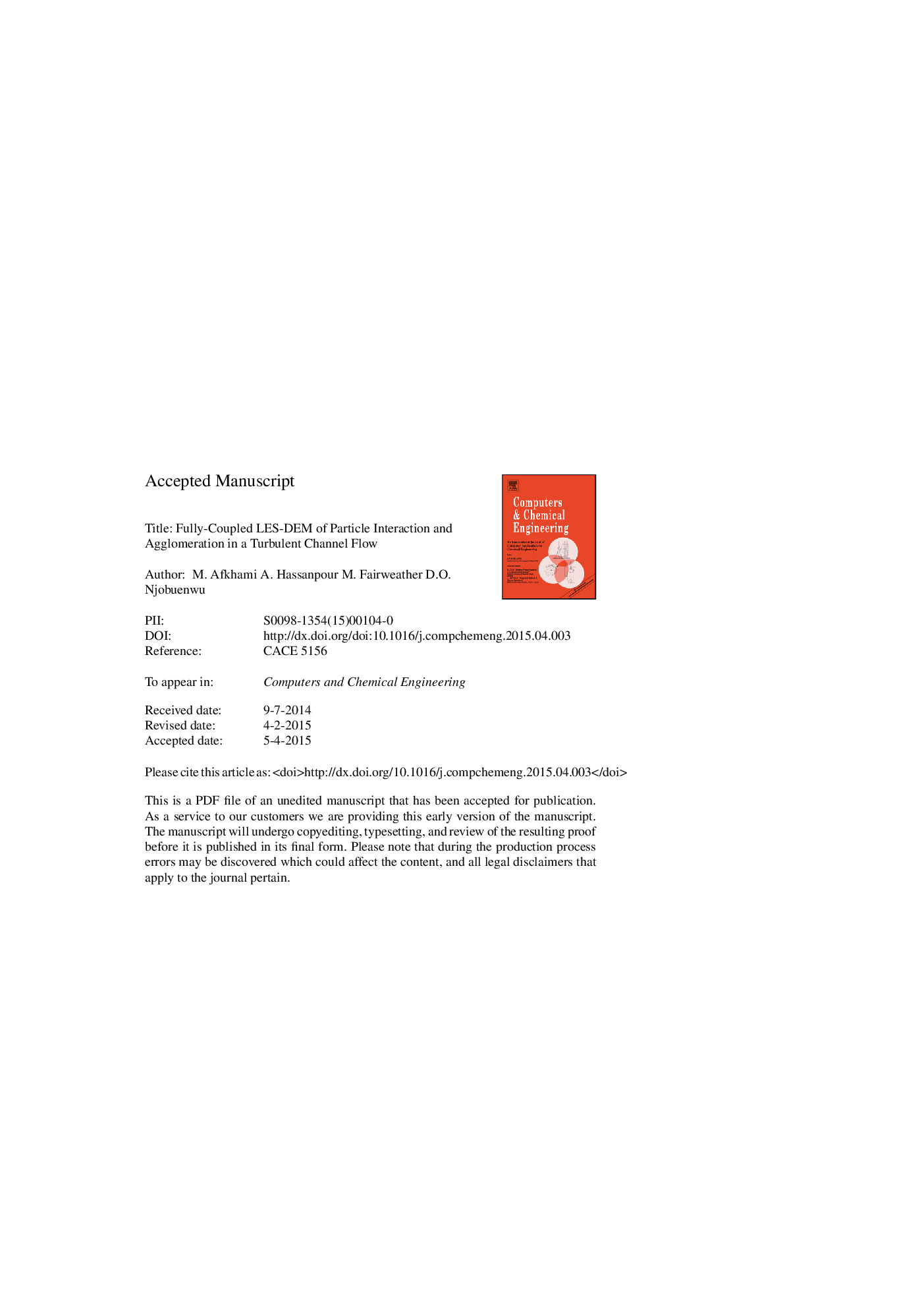| Article ID | Journal | Published Year | Pages | File Type |
|---|---|---|---|---|
| 6595399 | Computers & Chemical Engineering | 2015 | 62 Pages |
Abstract
Coupled large eddy simulation and the discrete element method are applied to study turbulent particle-laden flows, including particle dispersion and agglomeration, in a channel. The particle-particle interaction model is based on the Hertz-Mindlin approach with Johnson-Kendall-Roberts cohesion to allow the simulation of van der Waals forces in a dry air flow. The influence of different particle surface energies, and the impact of fluid turbulence, on agglomeration behaviour are investigated. The agglomeration rate is found to be strongly influenced by the particle surface energy, with a positive relationship observed between the two. Particle agglomeration is found to be enhanced in two separate regions within the channel. First, in the near-wall region due to the high particle concentration there driven by turbophoresis, and secondly in the buffer region where the high turbulence intensity enhances particle-particle interactions.
Related Topics
Physical Sciences and Engineering
Chemical Engineering
Chemical Engineering (General)
Authors
M. Afkhami, A. Hassanpour, M. Fairweather, D.O. Njobuenwu,
